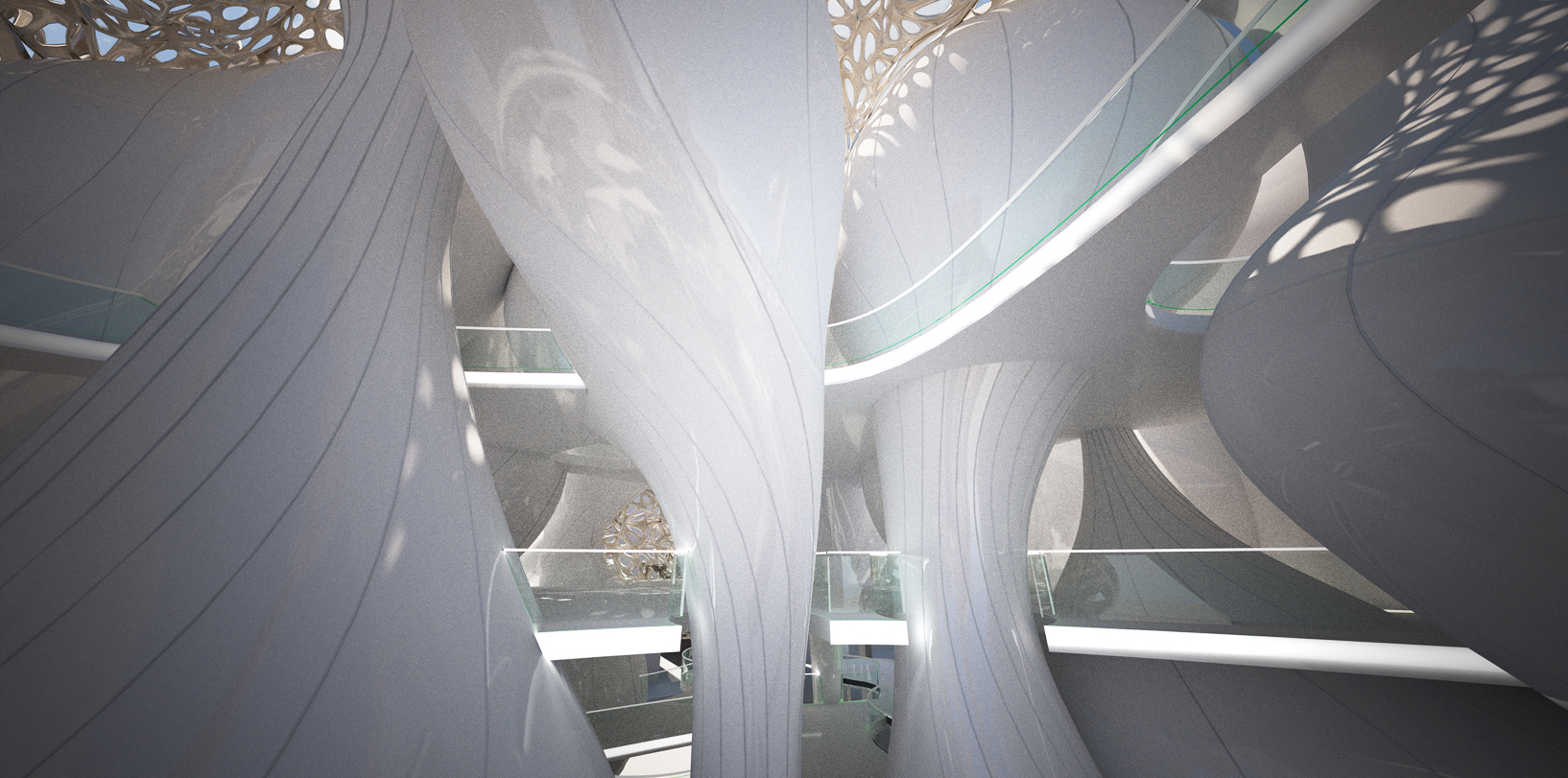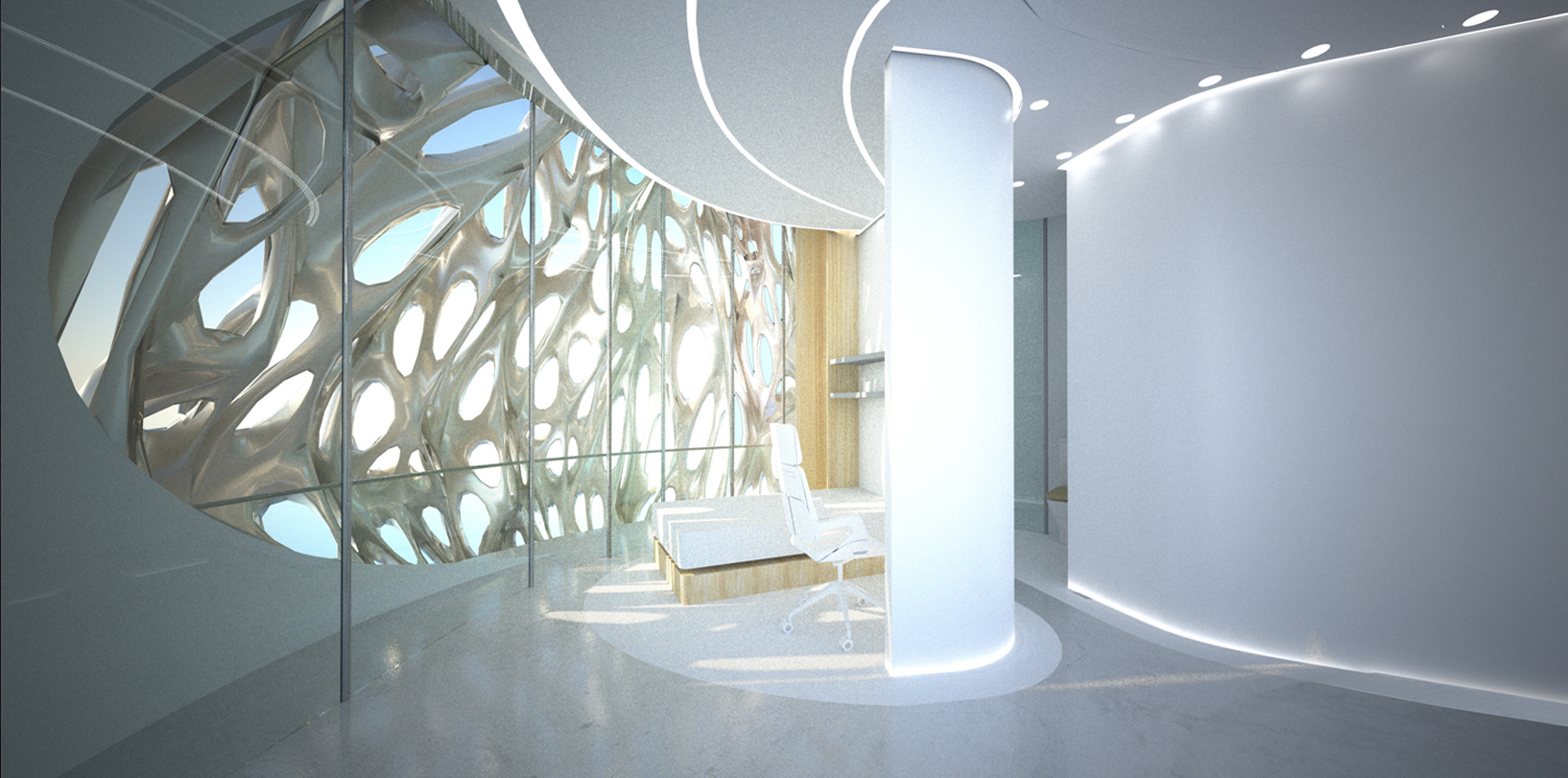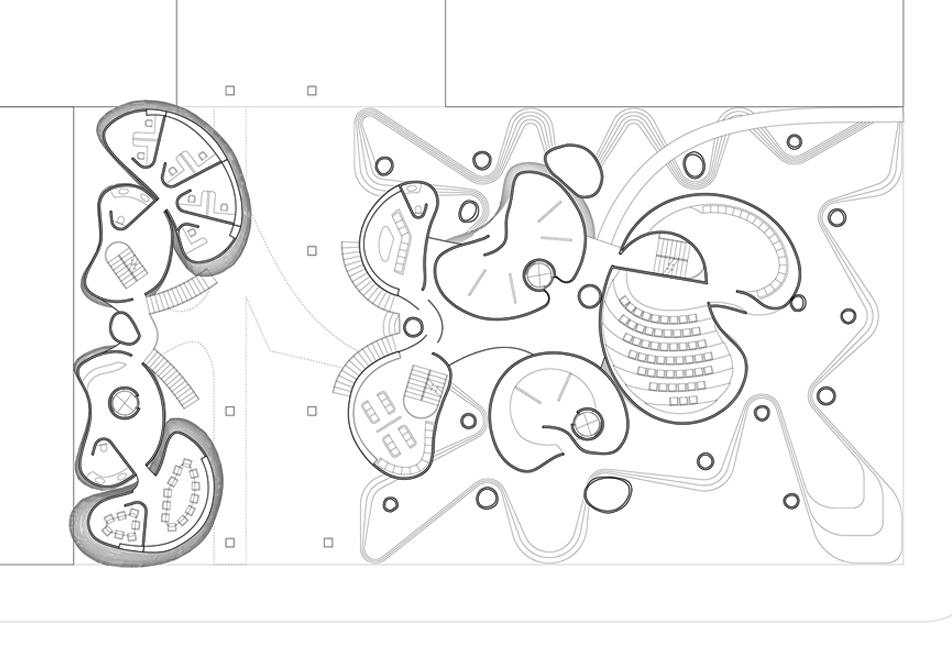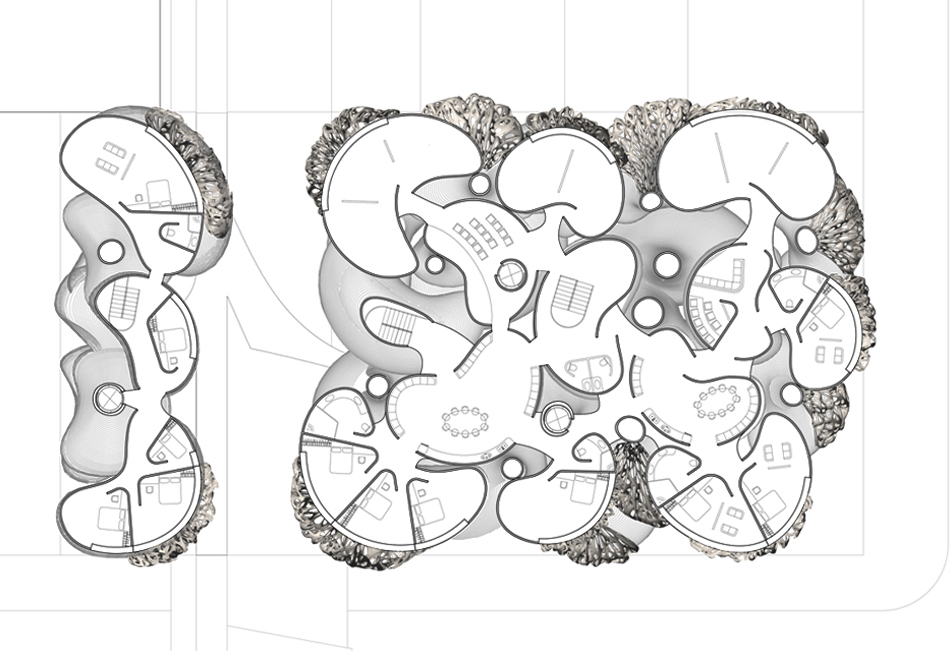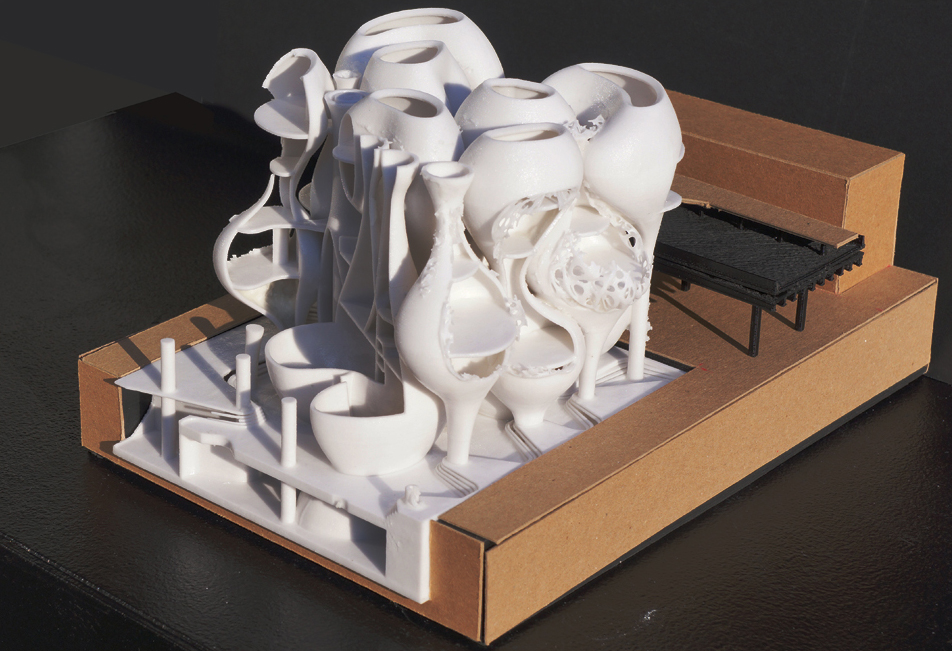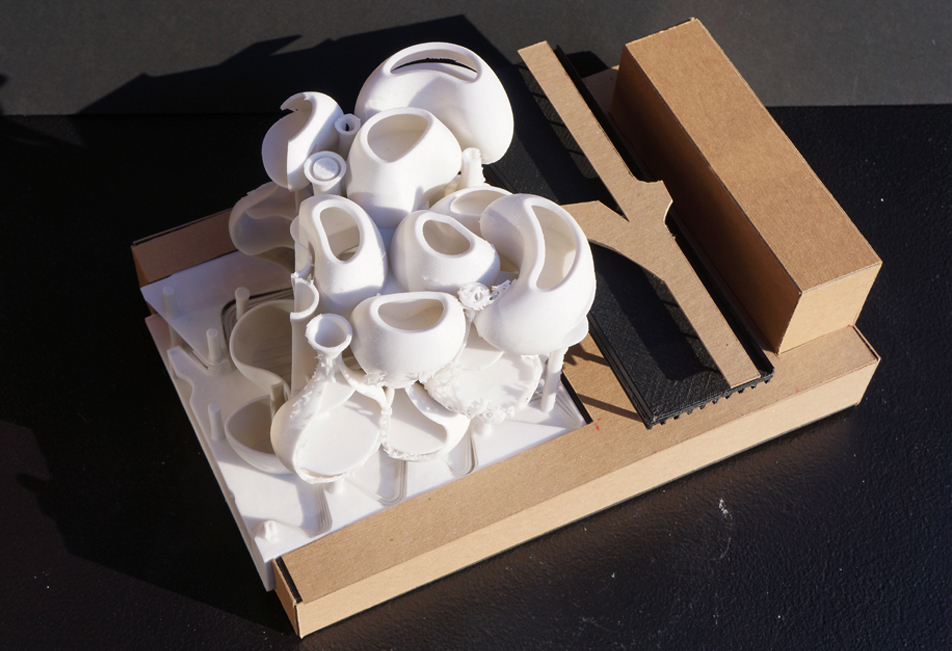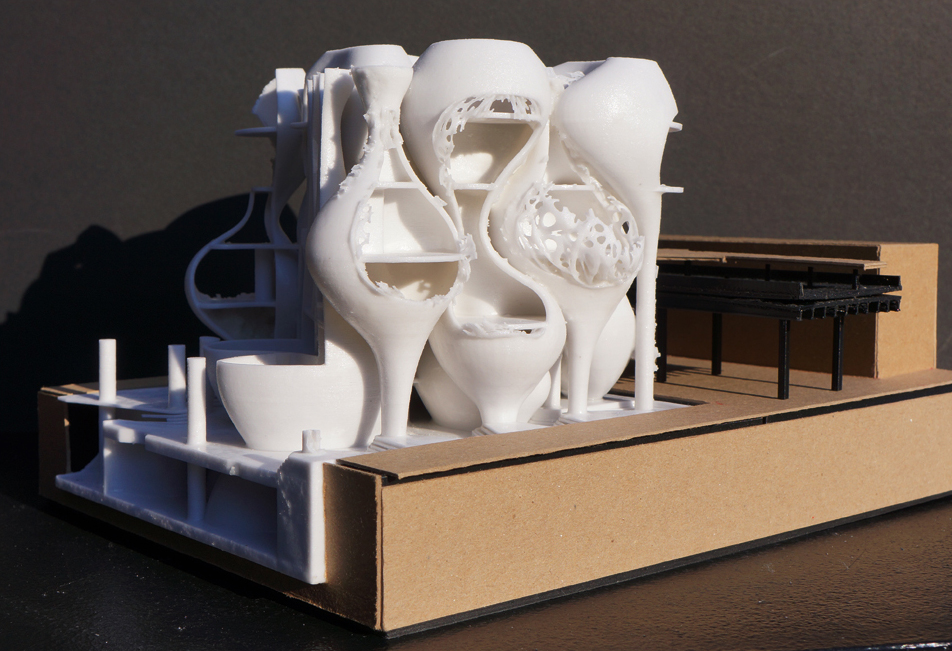Object Clusters
M Arch Semester Studio Project
University of Pennsylvania
Tags: Digital Fabrication, Physical Fabricatin, Material Study
M Arch Semester Studio Project
University of Pennsylvania
Tags: Digital Fabrication, Physical Fabricatin, Material Study
The semester starts with the intention to investigate a definition with object clusters. This recent speculative turn towards the re-conception of the architectural object requires us to explore new methods of design to undertake the challenges presented through Harman’s philosophy. Our section experiments with the initial development of unit clusters (not at the building scale nor at single unit scale but in between) as stand alone objects. These objects will seek to integrate the diversity of the program (including the various unit types) and circulation
into their section as well as the aspects of envelop and structural integrity. They will be evaluated as stand alone objects with their own aesthetic provocations. As they begin to cluster with other objects and encounter site/urban conditions, they will develop strategies of fusing, touching, intersecting, scaling, deforming to define the building and to create a new character towards a wholesome architectural object.
The project is given a “bottle“ as an original form finding portal. With various deformation, transformation, the project seeks for an architectural application of the original volumes.
Taking a smaller scale cluster as one unit, programming, circulation and facade details are studied closely in order to set up a general rule that the rest of the cluster could follow.
into their section as well as the aspects of envelop and structural integrity. They will be evaluated as stand alone objects with their own aesthetic provocations. As they begin to cluster with other objects and encounter site/urban conditions, they will develop strategies of fusing, touching, intersecting, scaling, deforming to define the building and to create a new character towards a wholesome architectural object.
The project is given a “bottle“ as an original form finding portal. With various deformation, transformation, the project seeks for an architectural application of the original volumes.
Taking a smaller scale cluster as one unit, programming, circulation and facade details are studied closely in order to set up a general rule that the rest of the cluster could follow.

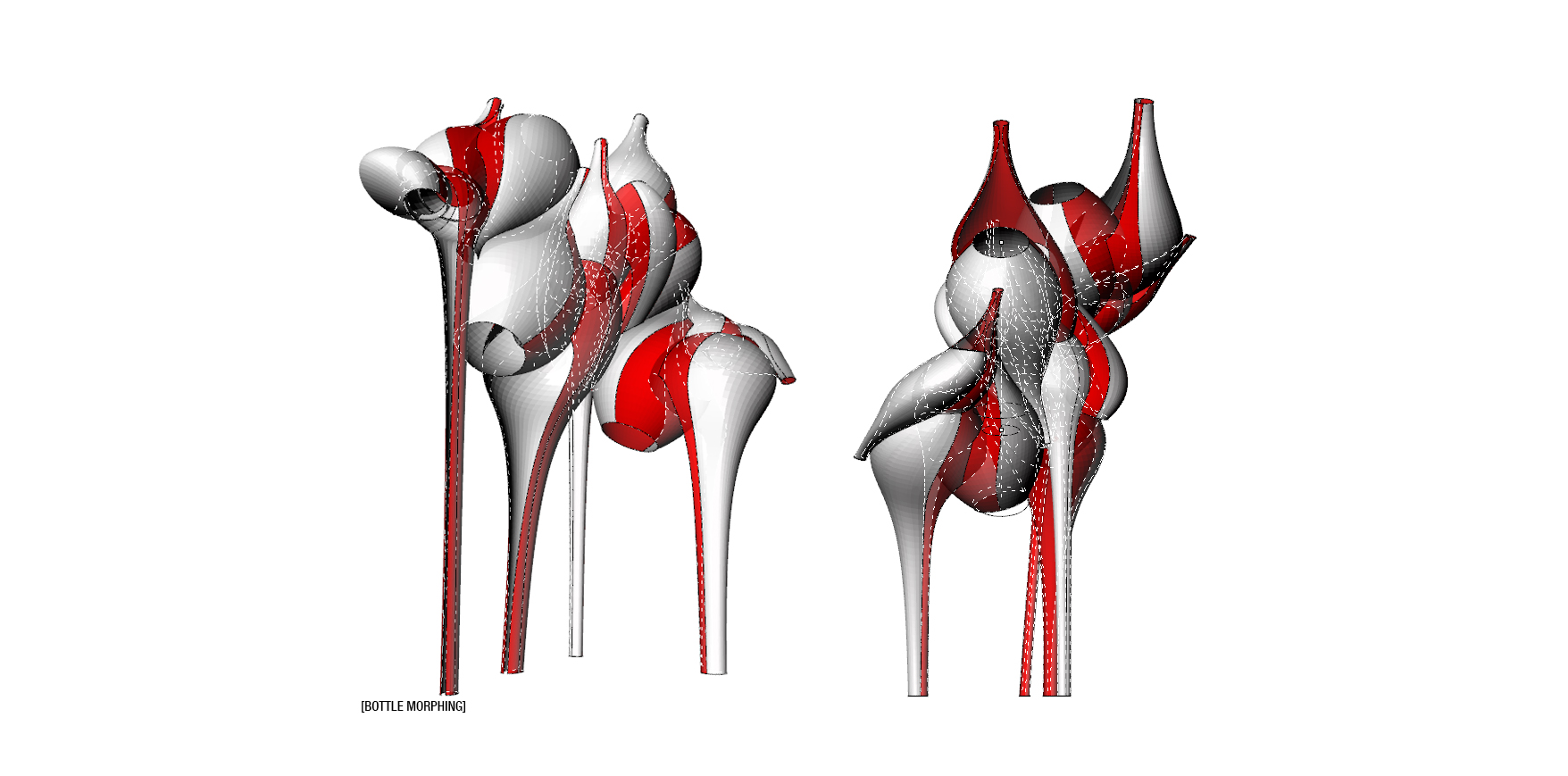


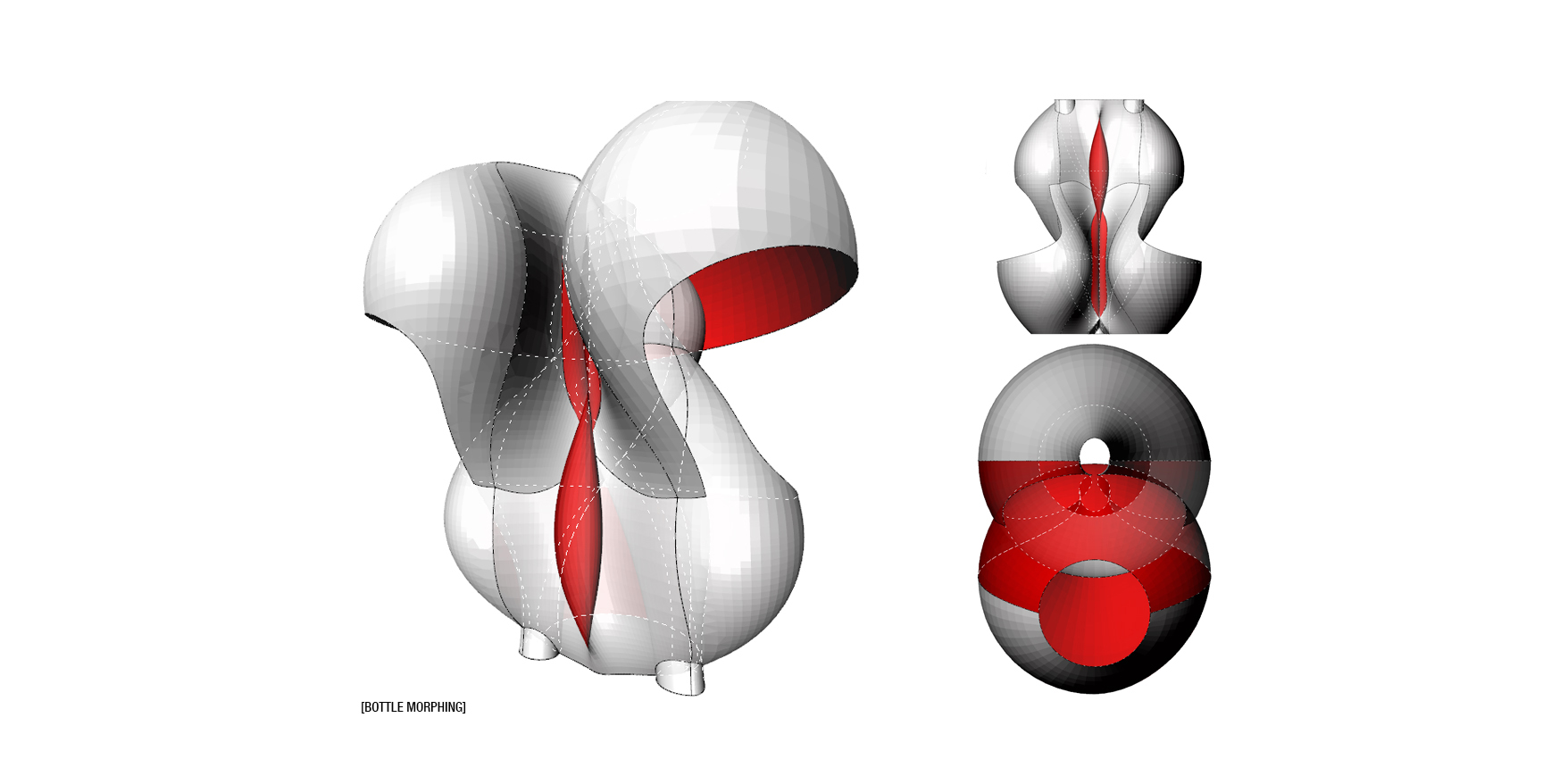
The overall design of the whole site follows the study resulted from the unit study. Different volumes are clustered together in a way that each one is customized and responds to its surroundings in a specific way. The inner balance and collectivity is shown with the personality and individuality of the volumes. The cavity between the volumes plays an important role as an identification of the space. The slab connection between the volumes is minimized so that it only offers necessary circulation covenience.

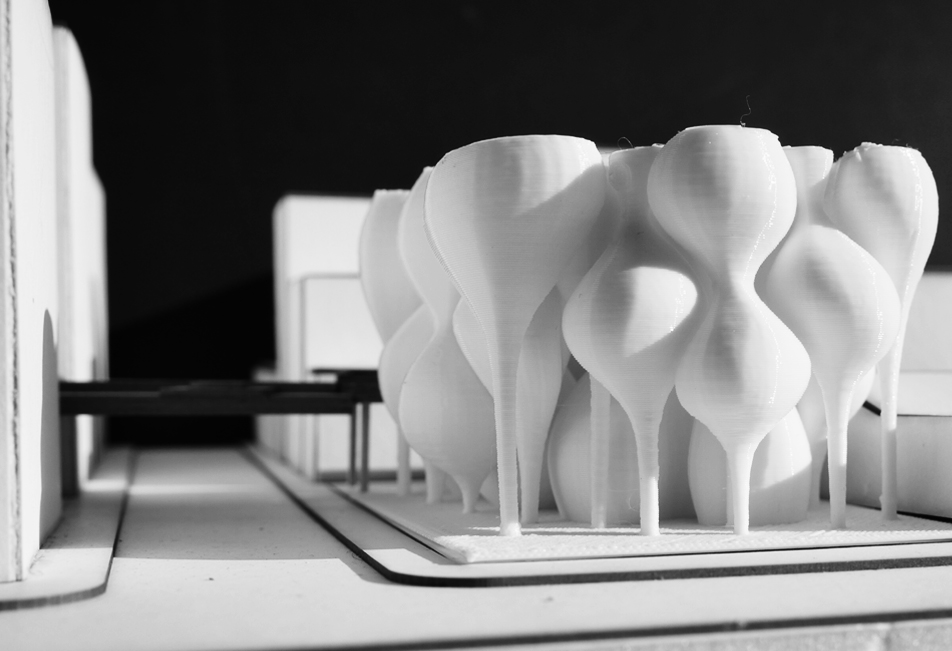
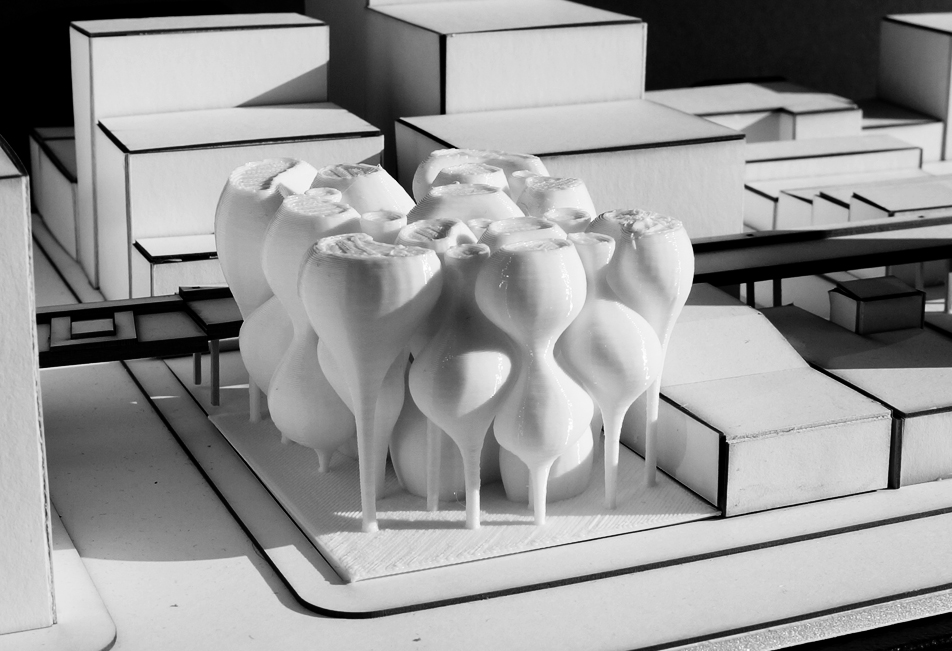


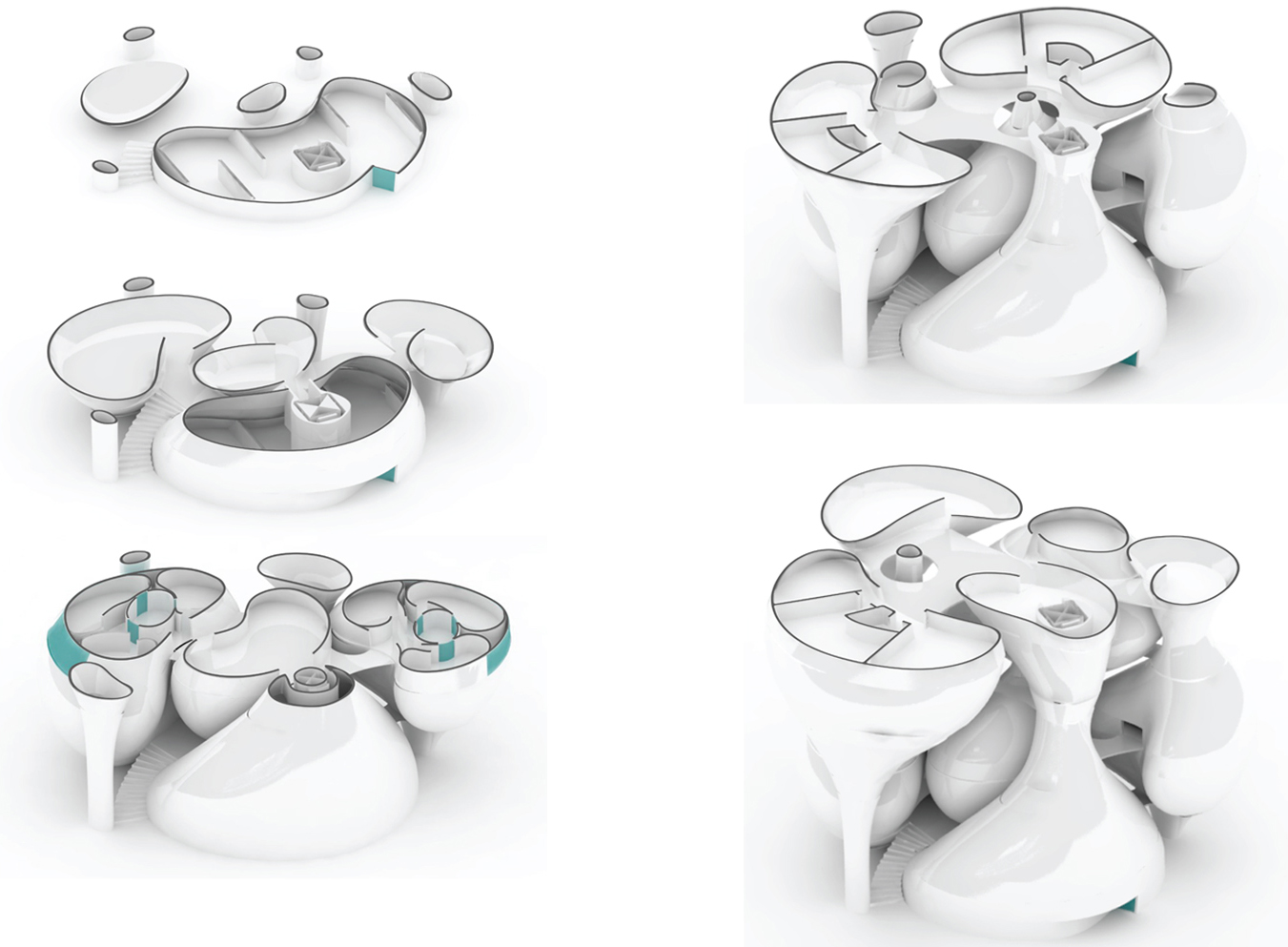

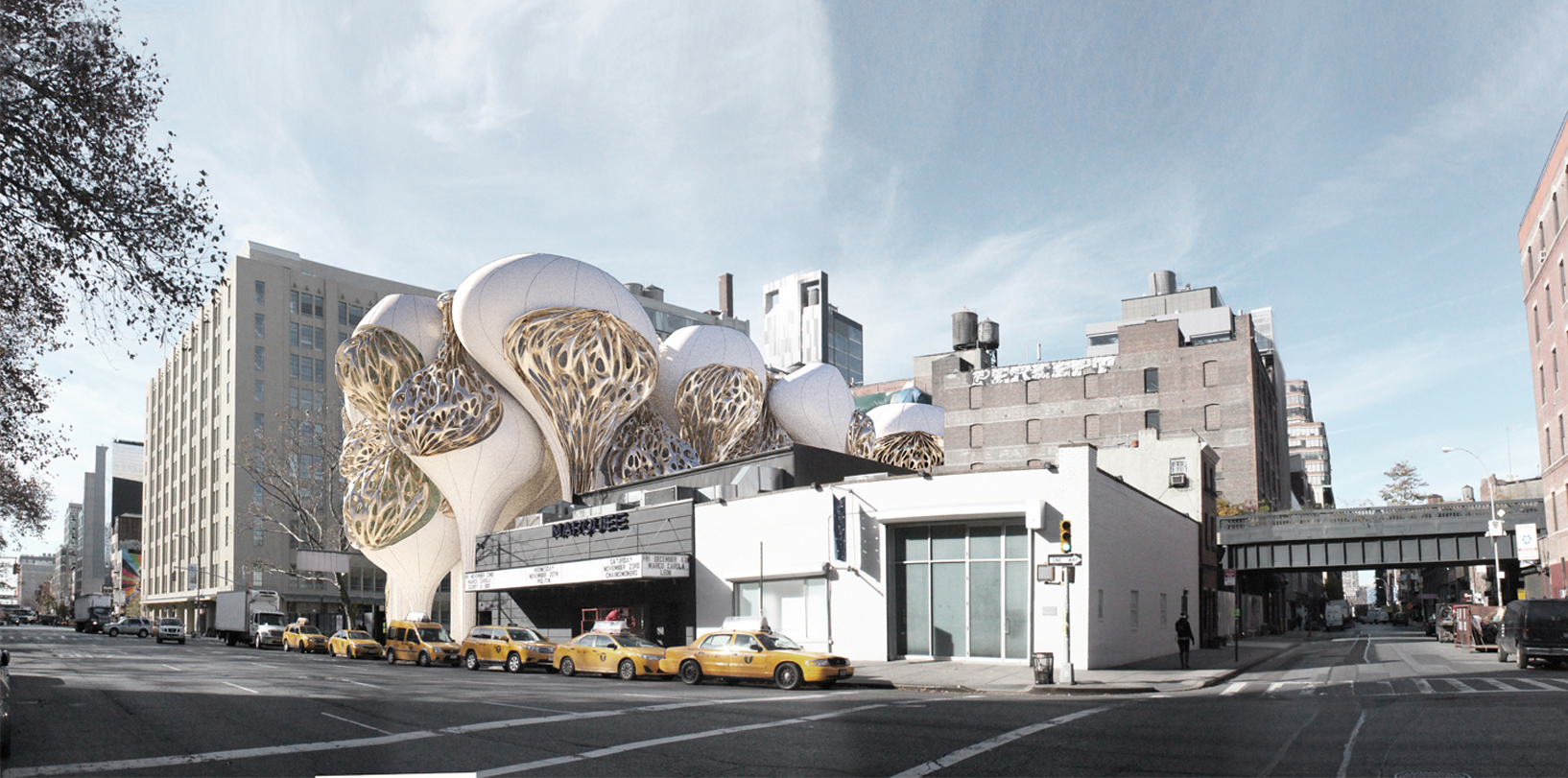


Philosopher Graham Harman has quite a startling point to make in this simple statement: “Most philosophies either undermine an object by stating that the object is not as important as the smaller pieces that form it, thus removing the larger aggregate from reality. Or, they take the counter position and “overmine” the object by stating that the object is only a construction of the human perceptual or cognitive faculties and thus has no reality of its own outside of human consideration.”*
In both of these positions the status of the object is seen as a fiction that can be criticized as a naive fetish. For the “Underminers”, reality is in relations between analyzable parts. For the “Overminers” reality is in the relations that humans construct. Both directions are part of a problem for Harman and they relate to very relevant discussions within the discipline of architecture. Though this notion of the object presents great potentials and a fresh way of thinking for the conceptualization of architecture, it also sets forth serious challenges to overcome: Architecture is always made of smaller parts then the whole itself and architecture always enters the realm of debate through relationism. We view the provocations of a renewed debate on aesthetics as a potential way to take on these challenges.
![Circulation Diagram]()
In both of these positions the status of the object is seen as a fiction that can be criticized as a naive fetish. For the “Underminers”, reality is in relations between analyzable parts. For the “Overminers” reality is in the relations that humans construct. Both directions are part of a problem for Harman and they relate to very relevant discussions within the discipline of architecture. Though this notion of the object presents great potentials and a fresh way of thinking for the conceptualization of architecture, it also sets forth serious challenges to overcome: Architecture is always made of smaller parts then the whole itself and architecture always enters the realm of debate through relationism. We view the provocations of a renewed debate on aesthetics as a potential way to take on these challenges.

